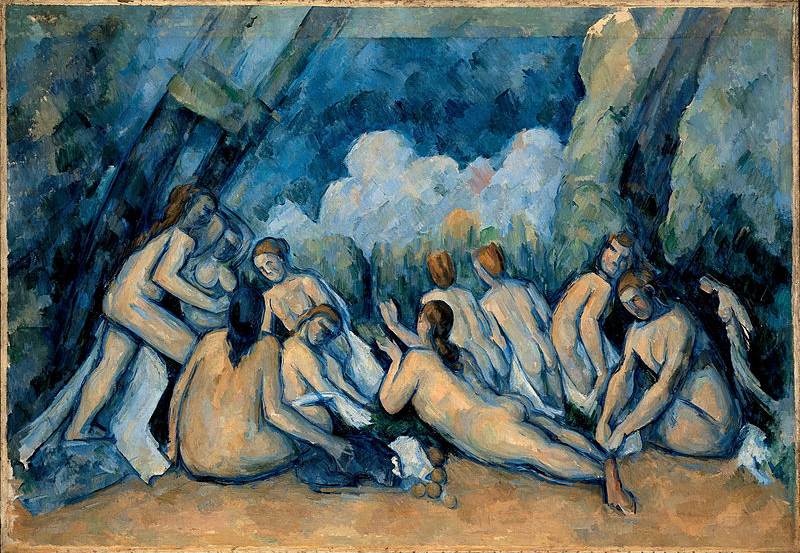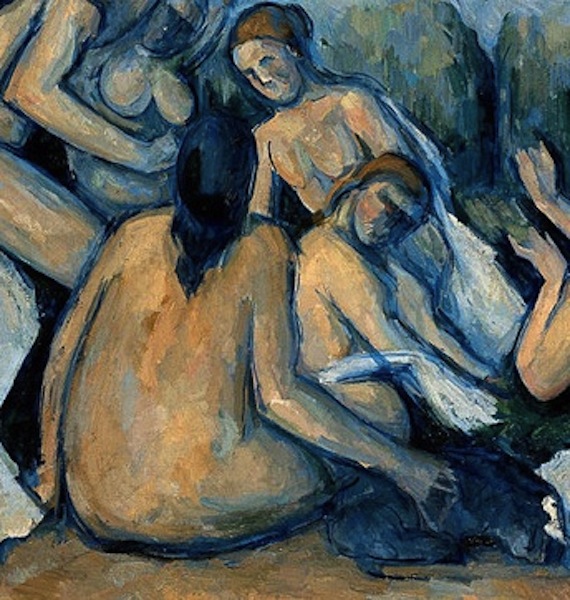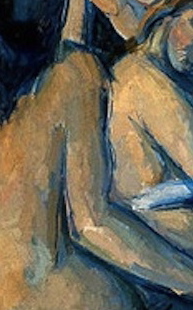Cezanne’s audacity
Paul Cezanne (1839 – 1906) was audacious in many ways, but especially in the vivacious and undisguised process of exploration and discovery with which he developed his paintings. Take the Large Bathers. It’s not naturalistic; there are logical parts and then parts that satisfied his need for a bit of dark or light someplace–the upper left and right corners, for example. Every painter faces such requirements, but most conceal the necessity by throwing in some convincing bit of scenery. Cezanne doesn’t bother. He paints till he gets the formal hit he wants, and then leaves it alone.


And then there are the smaller-scale improvisations. The foreground woman in the detail on the left–again, she’s not naturalistic, but she’s very carefully developed. Her back is thickly painted with a palette knife–warm & cool tones in great variety which nevertheless do not describe a woman’s back. No spine, for example.

But even more surprising than that is the way Cezanne draws over and around the figure. That long silhouette that begins at her left armpit and then swoops all the way around her right leg, ignoring the intricacies of waist and butt that would detain most painters. And even odder, braver, more questing, is the linework on her right side–detail right. That little line drawn with loose paint that departs from her arm and wanders out onto her side. Imagine if it weren’t there–the torso would take on the shape of a great pipe. That line gives her a waist. Barely, but it works. And the lines on the outside of the arm, correcting or at any rate finishing out the contour of the shoulder.
And while we’re there, the blue line of the next figure that drives right over the white fabric, which would otherwise dominate the figure. He doesn’t bother to invent a more realistic shape or location for the fabric, he just has it both ways at the same time.